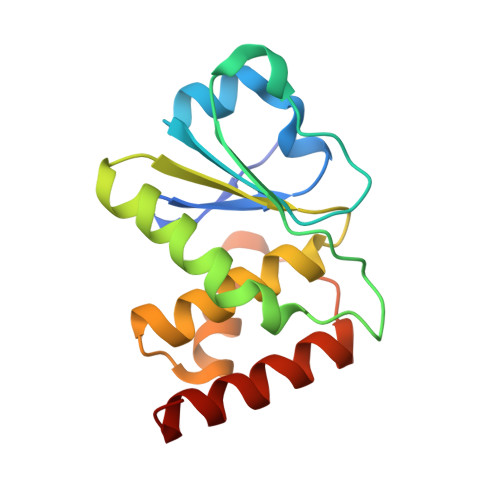An allosteric site on MKP5 reveals a strategy for small-molecule inhibition.
Gannam, Z.T.K., Min, K., Shillingford, S.R., Zhang, L., Herrington, J., Abriola, L., Gareiss, P.C., Pantouris, G., Tzouvelekis, A., Kaminski, N., Zhang, X., Yu, J., Jamali, H., Ellman, J.A., Lolis, E., Anderson, K.S., Bennett, A.M.(2020) Sci Signal 13
- PubMed: 32843541
- DOI: https://doi.org/10.1126/scisignal.aba3043
- Primary Citation of Related Structures:
6MC1 - PubMed Abstract:
The mitogen-activated protein kinase (MAPK) phosphatases (MKPs) have been considered "undruggable," but their position as regulators of the MAPKs makes them promising therapeutic targets. MKP5 has been suggested as a potential target for the treatment of dystrophic muscle disease. Here, we identified an inhibitor of MKP5 using a p38¦Á MAPK-derived, phosphopeptide-based small-molecule screen. We solved the structure of MKP5 in complex with this inhibitor, which revealed a previously undescribed allosteric binding pocket. Binding of the inhibitor to this pocket collapsed the MKP5 active site and was predicted to limit MAPK binding. Treatment with the inhibitor recapitulated the phenotype of MKP5 deficiency, resulting in activation of p38 MAPK and JNK. We demonstrated that MKP5 was required for TGF-¦Â1 signaling in muscle and that the inhibitor blocked TGF-¦Â1-mediated Smad2 phosphorylation. TGF-¦Â1 pathway antagonism has been proposed for the treatment of dystrophic muscle disease. Thus, allosteric inhibition of MKP5 represents a therapeutic strategy against dystrophic muscle disease.
Organizational Affiliation:
Department of Pharmacology, Yale University School of Medicine, New Haven, CT 06520, USA.



















